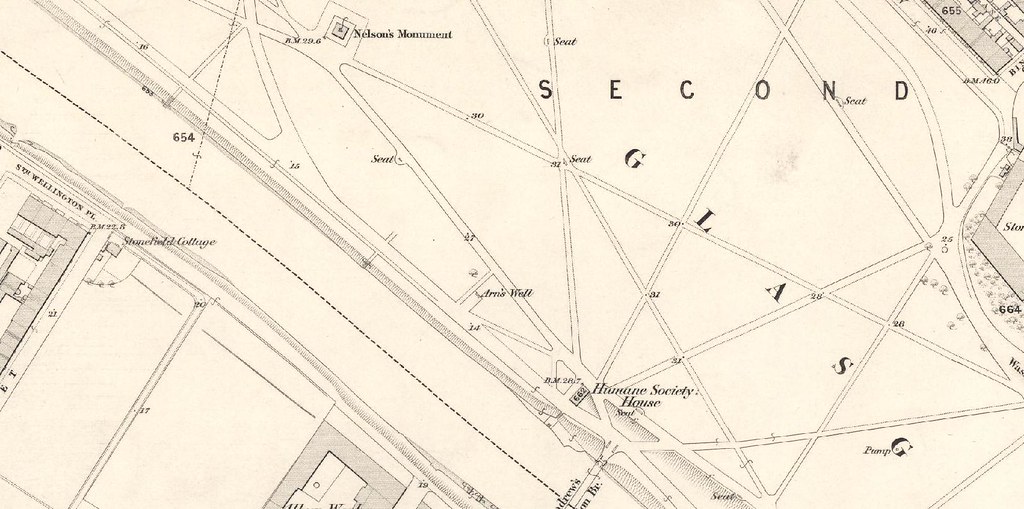viewtopic.php?f=23&t=8233
I found this in a book I bought to-day called 'Old Glasgow Club (transactions) 1918-1029 vol IV':
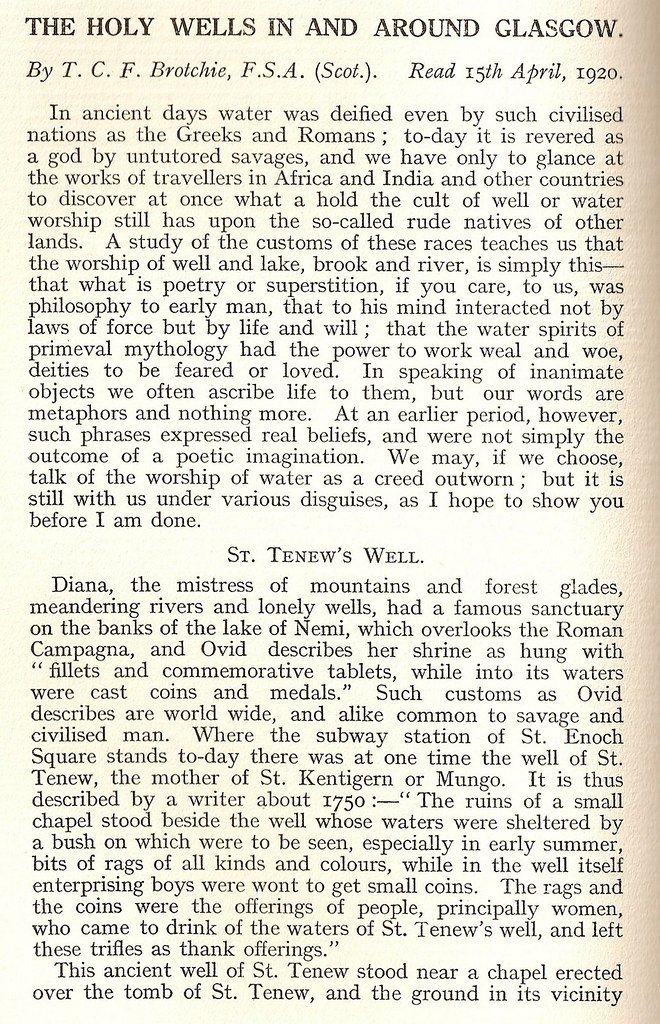
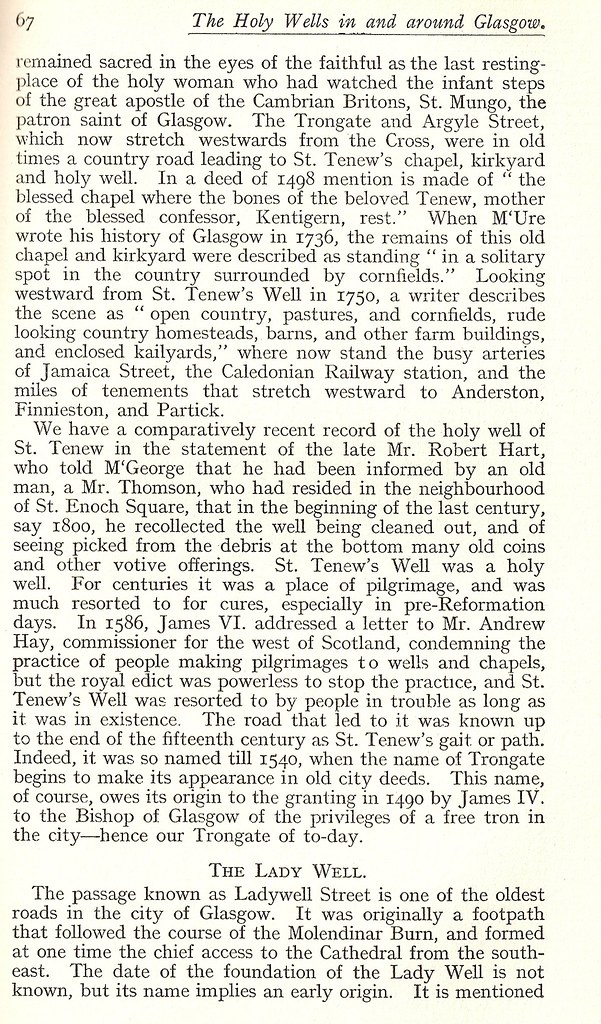


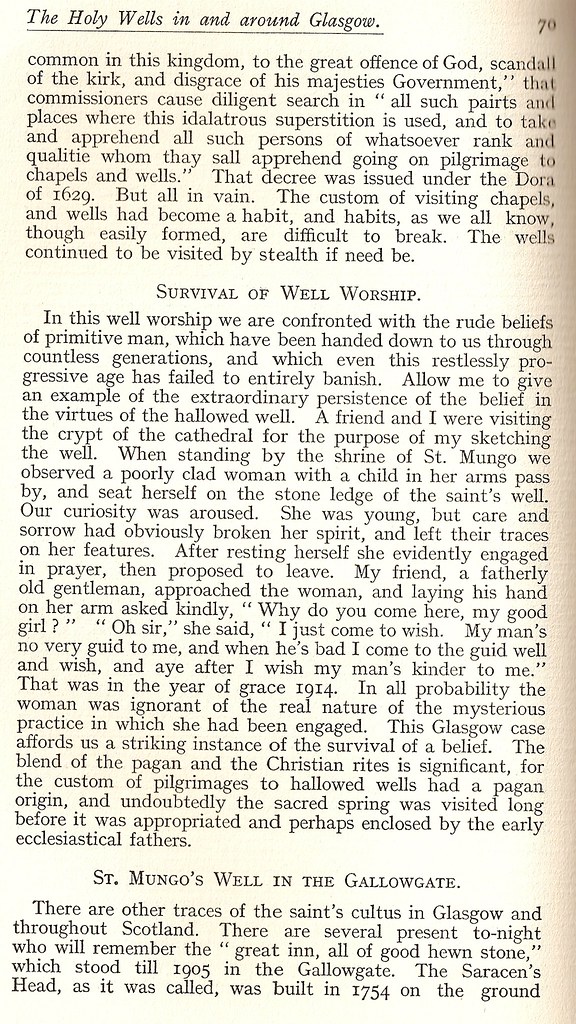
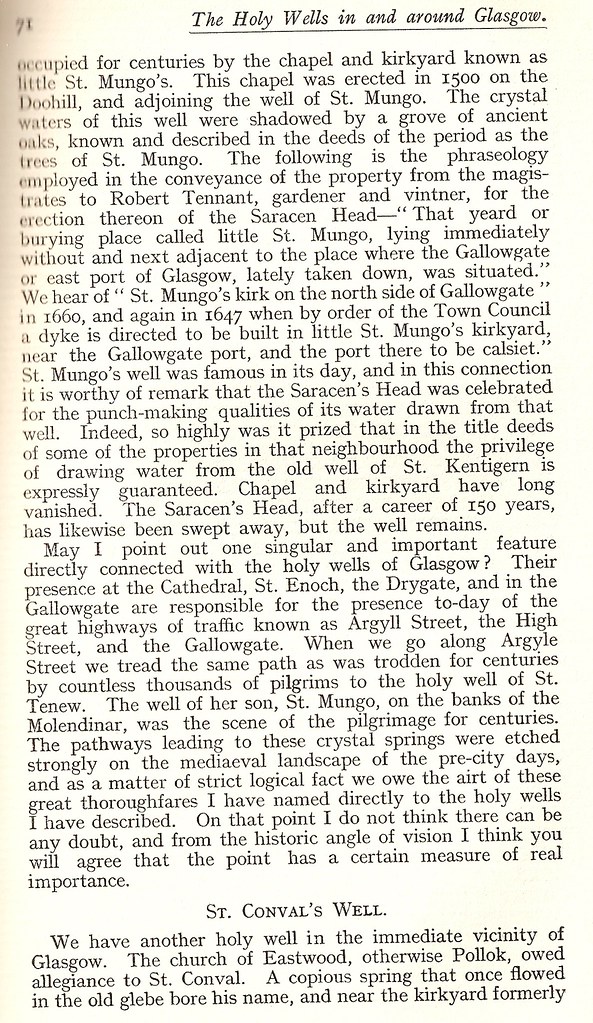
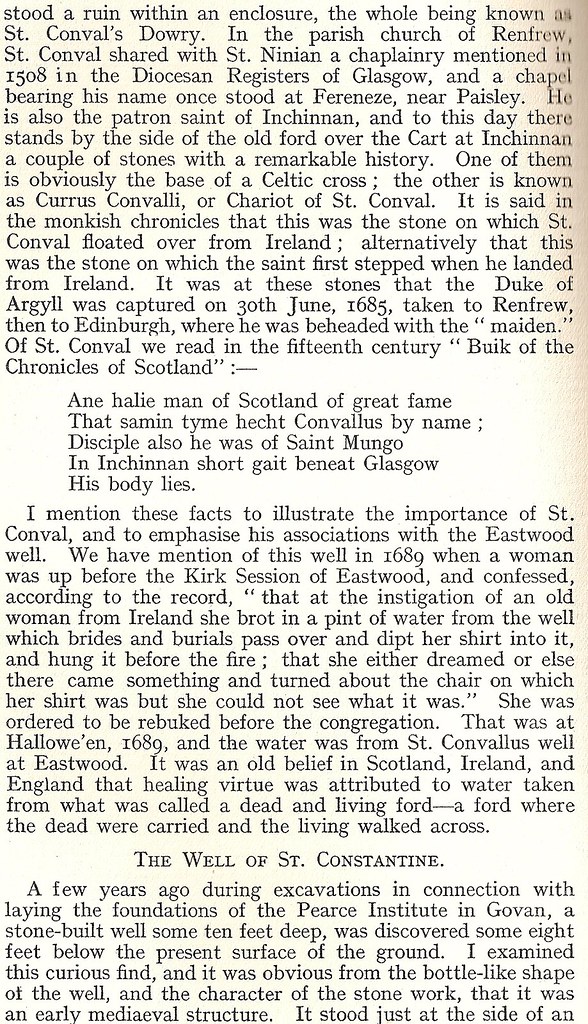
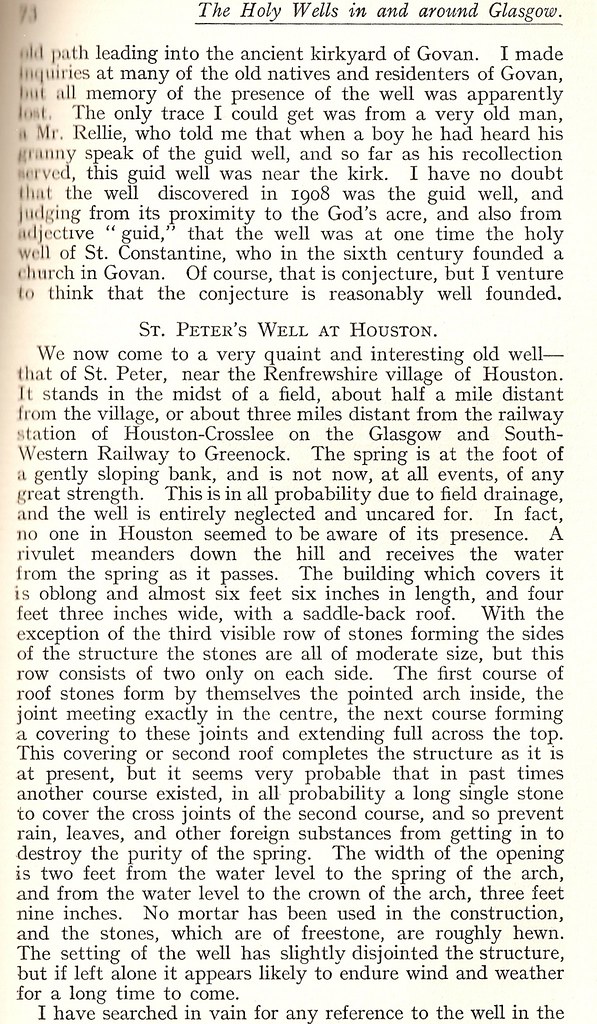
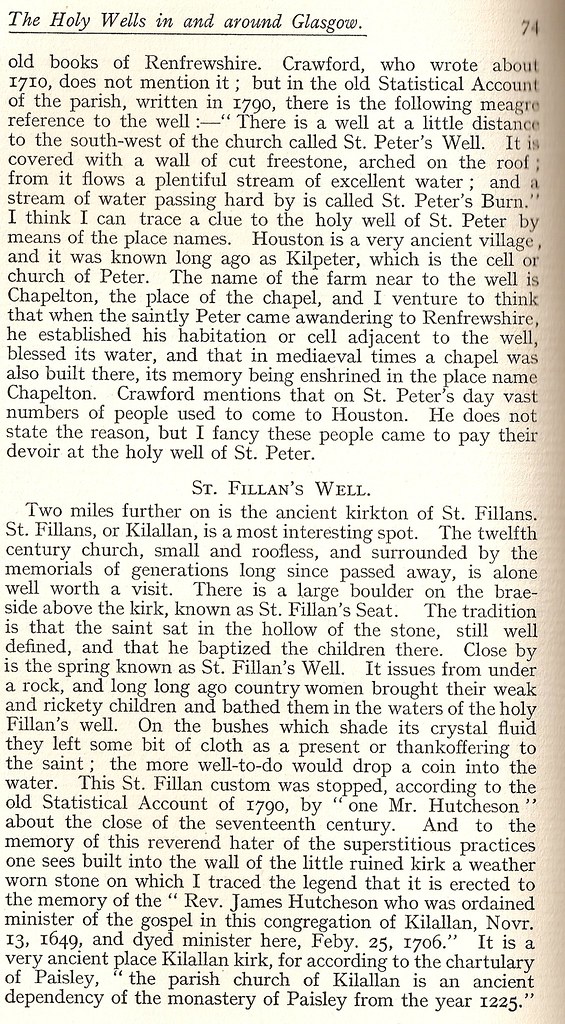

Mungo's Holy Well, Saracen, Gallowgate: 1870-1900:
St. Mungo's Holy Well was located in the courtyard of the Saracen's Head Inn on the Gallowgate.
It was also known as Little St. Mungo's Well, named after. Glasgow's patron saint. He is believed to have met Christian converts, and St. Columba, near to its location. The well has not survived redevelopment of the area.
In the early 20th century it was considered to be the oldest surviving draw-well in Glasgow, and at one time it would have been a major source of water. Its circular wall was capped by a heavy wooden lid.
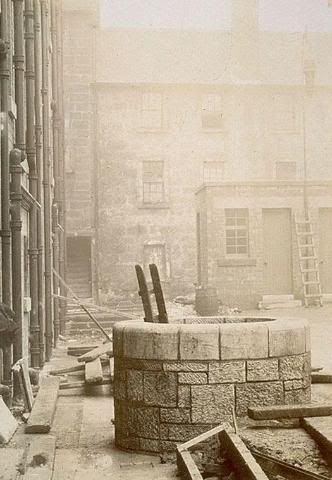
The Lady Well is a holy well in Glasgow in Scotland.
When Christianity came to Britain, pagan holy and healing wells were aggressively rededicated to the Virgin Mary and other saints while remaining places of Old Religion practice. Also known as 'Our Lady's Well', Glasgow's Ladywell is an artesian spring noted on early city maps and can be reliably assumed to predate the city. It lay just outside the city wall and Drygate Port in medieval times and will have refreshed Romans travelling the old Carntyne Highway east-west between forts along the Antonine Wall. Today it is erroneously believed to have been sunk for use of commoners denied access to a nearby Priest's Well, and/or to have been capped in the early 1800s out of fears of pollution or plague.
In fact, its wellhead was jointly rebuilt by the Merchants House and City Council in 1835-6 for enclosure in a new wall when the Fir Park behind it was turned into a gardened burial ground. The Ladywell was still in public use while most wells in Glasgow were closed, after fresh water piped from Loch Katrine transformed the city's health and sanitation in the 1860s. An old article says the Ladywell was the last public well to be closed but gives no date. The classical wellhead installed by the 1836 restoration bears no resemblance to the original - an open round one - and remains there today. The current lintel stone (its second) notes the 1836 rebuild and another by the Merchant's House in 1874. A plaque commemorates its most recent refurbishment by Tennant Caledonian Breweries in 1983. The Ladywell remains capped.
Wikipedia
THE LADY WELL
Ladywell Street, Glasgow.
This well has been restored and rebuilt, as it bears. I have not been
able to find any drawing showing the original structure. I cannot
possibly imagine that the present building (fig. 11) bears any resemblance
to the former, it being now strictly classic in design and detail. The
cross and urn are of cast metal. "Lady Love" or "Lady Well," so
called after a fountain at the bottom of {he Craigs (now included in the
Necropolis), sacred in Popish times to the Virgin.—Merchants' House
of Glasgow.
Listed Building Report
The Lady Well 1955:

The Lady Well 1960:

Lord Provost Michael Kelly after unveiling the rebuilt Lady Well
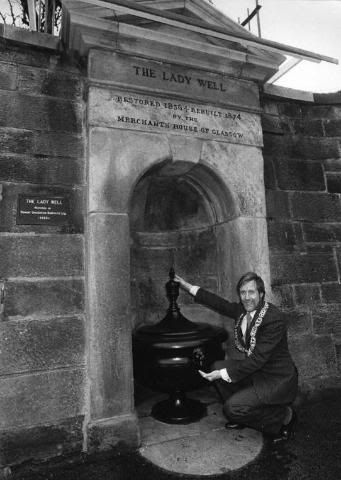
Glasgow Cathedral.
This well is curiously situated, and points, I think, to the spring having been well known and possibly regarded with feelings of veneration before the building of the present structure. It is exceedingly simple, the window at the back being as much the result of accident as design in its relationship to the well.
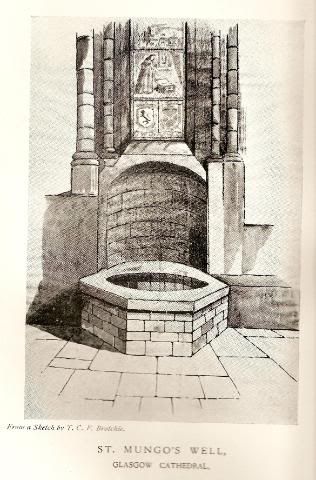
ST. ENOCH or THENEW, mother of St Kentigern—Glasgow. The following
references to this well are taken from the Glasgow Burgh Records :—" 16th
March 1573.—Johne Blakwod is fund in the wrang, and amerchiament of
court for del vying doun of the erd besyde St Thenewis Woll, quhilk is commcran,
purposyng to appropriat the samyn to himself, and dwme gevin
heir upon." " 13th June 1595.—The baillies ordanes the maister of work
to repair the brig at St Tinewis Well besyde the Greyn to be ane futte
rod in tyme cumying." Macgeorge, in his History of Old Glasgow says—" It was shaded by an old tree, which drooped over it, and which
remained till the end of the last century. On this tree the devotees who
frequented the well were accustomed to nail as thanks-offerings small bits
of tin-iron, probably manufactured for the purpose by a craftsman in the
neighbourhood, representing the parts of the body supposed to have been
cured by virtue of the blessed spring, a practice still common in Roman
Catholic countries. The late Mr Robert Hart told me that he had been
informed by an old man, a Mr Thomson, who had resided in the neighbourhood,
that at the end of last century or the beginning of the present
he had recollected this well being cleaned out, and of seeing picked out
from the debris at the bottom several of those old votive offerings which
had dropped from the tree, the stump of which at that time was still
standing."
St Thenew's Well is shown (in the area NS 589 648) S of St Thenew's Chapel (NS56SE 26 q.v.) on Renwick's plan. Walker quotes references to this well in Glasgow burgh records of 1573 and 1595. Macgeorge states that a tree stood besi de the well, and pieces of metal were inserted into it as offerings. Some of these were recovered when the well was being cleaned out at the end of the 18th century. (This area is now built up.)
J R Walker 1883; A Macgeorge 1880; R Renwick and J Lindsay 1921.
http://www.rcahms.gov.uk/pls/portal/can ... link=44288
For future consideration:
The Marriage Well, Shettleston
Arms Well (on the Green), Glasgow
"HOLY WELLS" IN SCOTLAND. BY J. RUSSEL WALKER, ARCHITECT.









